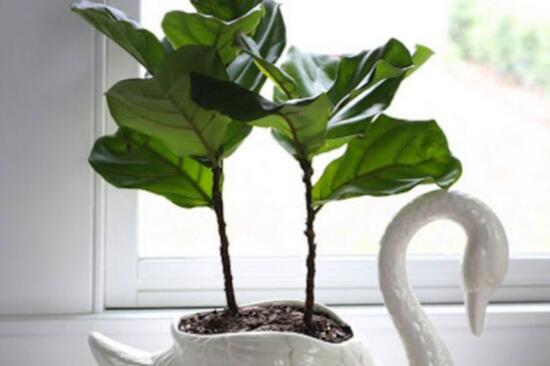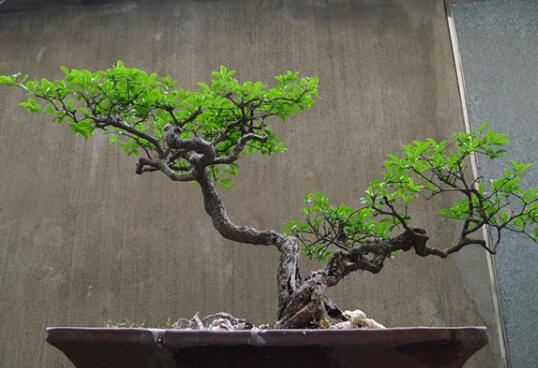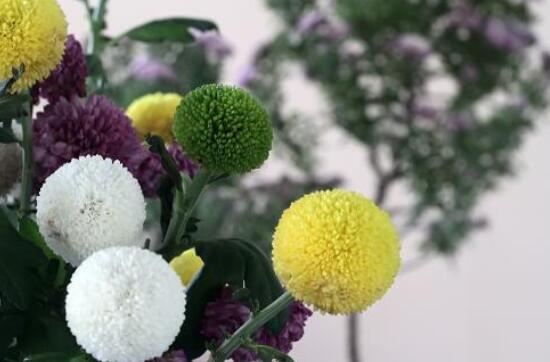How to propagate Ficus angustifolia and two propagation methods (cuttage / high pressure)
As a common foliage plant, Qin leaf banyan is very effective, it not only looks good, can purify the air, but also has a good fengshui effect, but also has a good use in medicine. Naturally, many flower friends want to raise such a plant, but if they buy it and raise it, they might as well breed and plant it themselves. How can figs reproduce?. Next, follow the editor to take a look at the breeding method of fir.
First, how to propagate the figs, cuttings / high pressure

If you are a novice in aquaculture, you can master the method of cultivating figs, but if you are an old hand, in addition to raising them, you should also know how to breed them. Only in this way can you have more fun in farming. As for how to reproduce the leaf banyan, the most commonly used thing in addition to cutting is high pressure, and then the editor will introduce the specific operation for you in detail.
2. Two propagation methods of Ficus chinensis
The main results are as follows: (1) the cutting propagation method of Ficus chinensis.
1. Cutting time
2. Cuttings selection
When the time is determined, we will select the cuttings used for fir cuttings. On the potted banyan with piano leaves, 1-2-year-old branches were selected, cut 20-30 cm away from the potted soil, and then cut into 3-4 stem segments as cuttings.
Cuttings are required to keep only one leaf per cuttage and cut off the rest. In addition, the remaining leaves should also be cut off 2max, 3-3x4 to reduce water evaporation. After the cuttings are selected, soak the wound in water or touch the wound with plant ash to prevent the sap from flowing out.
3. Cuttage starts
Cultivate the river sand or perlite into a cutter for cutting banyan leaves, and then insert the prepared cuttings into the cuttings. After that, keep the air humidity around the insert bed, at the temperature of 25-30 ℃, it can take root in a month, and then you can plant it in a pot.
(2) the method of high pressure propagation of Ficus chinensis.
1. High voltage time
In addition to cutting, the propagation method of Ficus chinensis can also be selected by high pressure method. According to the growth habits of Ficus chinensis, its activity is the highest from April to August, so high pressure should also be carried out during this period.
2. High pressure method
On the potted banyan with piano leaves, select the semi-lignified top branch, leave 3-4 leaves in the upper part, and then peel the skin in a ring under it. After that, the wound is wrapped with moss and then bound with plastic film. It can take root in about 40 days, and when it grows to about 30 cm, it can be removed and planted or put on the basin.
Generally speaking, the propagation of fir leaf banyan, whether it is cutting or high-pressure species, is easy to survive, but the most suitable for family reproduction is cutting. Of course, the method is dead, people are alive, according to the actual situation, we can choose other methods to reproduce. With regard to the breeding method of fir, the editor has introduced it here, hoping to give you some help.
The Propagation method of potted Banyan Ficus how to raise it
Qin leaf banyan, also known as piano leaf rubber tree, is an evergreen tree plant of Moraceae and Ficus genus. It gets its name because the leaf apex is swollen in the shape of a violin. The plant type is tall, straight and unrestrained, the leaf is strange, and it has high ornamental value. It is often used as an ideal foliage plant in the hall, and it can also be used to decorate the hall or office. Let's take a look at how to grow potted fir leaves.
Growth habits of Ficus quinquefolia
Banyan is native to Sierra Leone to Morocco in West Africa, lowland rainforest, widely cultivated in tropical, subtropical, indoor and greenhouse. It is mainly produced in Guangdong, Hainan, Guangxi, Fujian, Hunan, Hubei, Jiangxi, Anhui, Zhejiang and other places in China. It likes warm, humid and sunny environment, the suitable temperature for growth is 25 ℃ to 35 ℃, dormancy is about 15 ℃, and more than 5 ℃ can survive the winter safely. The requirement for moisture is that it is better to be wet than dry.
The Propagation method of Banyan Ficus
1. Cutting: 1 / 2-year-old branches of Ficus quinquefolia were cut at 20 / 30 cm from the soil surface of the basin, and cut into 3 / 3 / 4 stem segments as cuttings, leaving a leaf in each cuttage, and the leaves were cut off 2 / 2 / 3 / 3 / 4 to reduce water evaporation. First soak the cuttings in water or touch the wounds with plant ash to prevent the sap from flowing out, insert the cuttings into the cutter made of river sand or perlite, and pay attention to keeping the temperature of the sowing bed and the high air humidity around it. It can take root in about one month at the temperature of 25-30 ℃.
2. High pressure: the high pressure propagation of Ficus chinensis can be carried out from April to August. Select the top branch of the upper half of the mother plant, leave 3 or 4 leaves on the upper part, peel or cut in the lower part of it, then wrap it with moss and bind it with plastic film. It can take root in about 40 days, and then it can be planted or pots when it grows to about 30 cm.
How to cultivate potted banyan leaves?
1. Potted soil: when potted, the basin with larger volume should be selected, and the pot should be changed every 2-3 years in spring. The bottom of the basin should be covered with tiles with convex surface, and then put on an old basin, and then a new substrate composed of pastoral soil, peat soil and a small amount of sandy soil should be added. The soil should be slightly acidic.
2. Fertilization: the leaves of Chin leaf banyan are broad and need a large amount of fertilizer, so liquid fertilizer or granular compound fertilizer should be applied in 1-2 weeks of growth and season to promote plant growth and thick green leaves, but no fertilizer is generally applied at the end of autumn and winter. From the opening of new leaves to the middle of August, fertilizer was applied every 10 days, mainly nitrogen fertilizer. When the growth is large, you can apply more fertilizer, stop growing or do not apply fertilizer when dormant.
3. Watering: the watering amount of Qin leaf banyan should depend on the temperature of the surrounding environment, the water demand in spring and summer is relatively large, and the amount of water should be reduced in the dormant period to keep the basin soil moist. Summer can properly shower light rain to facilitate growth, regular spraying of warm water, growth will be better, watering is also slightly acidic for better. Excessive temperature fluctuations or exposure to direct sunlight in the short term are not conducive to growth. If the plant is watered too much under low temperature for a long time, it can cause plant death.
4. Illumination: banyan has strong adaptability to light and can grow well under bright scattered light. Direct sunlight should be avoided in summer, and shade should be increased in winter if it is placed outside. Suitable for growing in semi-overcast environment, avoid direct sunlight in summer, so as not to burn the leaves and lose their luster. But the light is too weak and the growth of the plant is weak, so it must be given brighter light in order to grow healthily. The growing season generally grows well under 50% shade.
5. Temperature: compared with other banyan plants, Ficus chinensis has relatively weak cold tolerance, the suitable temperature for growth is 25 ℃ to 35 ℃, dormancy is about 15 ℃, and it can survive the winter safely above 5 ℃. In order to improve its cold resistance, in addition to controlling the amount of water in late autumn and winter, phosphorus and potassium fertilizer can be increased about one month before the coming of winter.
6. disease prevention: after the disease occurs, the banyan plant should be quickly moved to a place with sufficient sunlight and ventilation, do not spray water on the leaf surface, and cut off the seriously diseased leaves. Mildly diseased leaves can cut off the disease spot together with part of the healthy tissue, and then spray Duoduo solution to protect it, or spray 80% Dysen zinc wettable powder 500 times, 25% metalaxyl wettable powder 500 times, etc., pay attention to the rotational use of chemicals.
The propagation method of Ficus angustifolia is generally propagated by cutting or high pressure. When cutting, select 1-2-year-old branches, cut them 20-30 cm away from the soil surface, cut them into 3-4 stem segments, as cuttings, leave a leaf for each cuttage, and cut off the leaves for 3-3 times to reduce water evaporation; first soak the cuttings in water or touch the wound with plant ash to prevent sap from flowing out. Cuttings are inserted in a bed made of river sand or perlite, and pay attention to keeping the temperature of the bed and high air humidity around it. It can take root in about a month at the temperature of 25-30 ℃. After the truncated plant, due to the destruction of its apical dominance, the hidden bud of the stem node can germinate new shoots and form a bifurcated tree, and the cuttings can be cut again after the new shoots are aged. The method of high-pressure propagation is also a common method for the reproduction of Ficus angustifolia.
- Prev

How to breed, how to breed, how to
Ligustrum lucidum is a common flower plant in people's life, which has high ornamental value. There are many people who cultivate it everywhere. However, with the increase of people cultivating it, people are more concerned about its reproduction. How does Ligustrum lucidum reproduce? What are the ways in which the leaves are reproduced?
- Next

How to breed table tennis chrysanthemum, table tennis chrysanthemum cutting propagation/spring cutting autumn flowering
Pingpong chrysanthemum, an exceptionally beautiful compositae plant, its flower shape strange, rich in color, and long flowering period, so loved by flower friends. Life, many people want to raise table tennis chrysanthemum, but buy to raise, it is better to plant their own, and this requires us to master the reproduction method of table tennis chrysanthemum
Related
- Fuxing push coffee new agricultural production and marketing class: lack of small-scale processing plants
- Jujube rice field leisure farm deep ploughing Yilan for five years to create a space for organic food and play
- Nongyu Farm-A trial of organic papaya for brave women with advanced technology
- Four points for attention in the prevention and control of diseases and insect pests of edible fungi
- How to add nutrient solution to Edible Fungi
- Is there any good way to control edible fungus mites?
- Open Inoculation Technology of Edible Fungi
- Is there any clever way to use fertilizer for edible fungus in winter?
- What agents are used to kill the pathogens of edible fungi in the mushroom shed?
- Rapid drying of Edible Fungi

